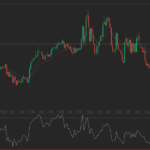Yesterday’s trade saw USD/CAD within the range of 1.2815-1.2873. The pair closed at 1.2862, edging up 0.21% on a daily basis. It has been the 60th gain in the past 116 trading days and also a fourth consecutive one. The daily high has been the highest level since June 6th, when a high of 1.2984 was registered. USD/CAD has gone down 1.86% so far in June, following a 4.31% surge in the prior month.
At 7:07 GMT today USD/CAD was edging down 0.11% on the day to trade at 1.2848. The pair touched a daily high at 1.2877 during the early phase of the Asian trading session, undershooting the range resistance level (R3), and a daily low at 1.2847 at 7:04 GMT.
Canadas dollar retreated for a fourth straight day against its US counterpart, as crude oil futures tested lows unseen since May 24th on Tuesday. Crude oil marked its 59th drop out of the past 127 trading days on June 14th. Oil for July delivery went down as low as $47.73 per barrel and closed at $47.82, plunging 2.17% compared to Monday’s close. As of 7:25 GMT today the commodity was gaining 0.52% to trade at $48.07, after going up as high as $48.09 per barrel earlier.
On Wednesday USD/CAD trading may be influenced by the following macroeconomic reports and other events as listed below.
Fundamentals
United States
Producer Prices
Annual producer prices in the United States probably dipped 0.1% in May, according to the median estimate by experts, after remaining flat in April. The Producer Price Index reflects the change in prices of over 8 000 products, sold by manufacturers during the respective period. The PPI differs from the Consumer Price Index (CPI), which measures the change in prices from consumer’s perspective, due to subsidies, taxes and distribution costs of different types of manufacturers in the country. In case producers are forced to pay more for goods and services, they are more likely to pass these higher costs to the end consumer. Therefore, the PPI is considered as a leading indicator of consumer inflation. In case annual producer prices fell at a faster rate than anticipated, this would have a moderate bearish effect on the US dollar.
The nation’s annualized core producer price inflation, which excludes prices of volatile categories such as food and energy, probably accelerated 1.0% in May from 0.9% in April. The latter has been the smallest annual increase in the core PPI since January, when the index gained 0.6%. The Bureau of Labor Statistics is expected to report on the official PPI performance at 12:30 GMT.
New York Empire State Manufacturing Index
The New York Empire State Manufacturing Index probably improved to a value of -4.00 in June, according to the median forecast by experts, from -9.02 in May. The latter has been the lowest index reading since February, when the gauge was reported at -16.64.
In May, the gauge of new orders rose new orders slipped to -5.54 from 11.14 in the prior month, that of shipments fell to -1.94 from 10.17 in April, the sub-index for prices paid eased to 16.67 from 19.23 in April, while the sub-index for prices received dropped to -3.13 from 2.88 in the previous month. The six-month outlook was less optimistic in May compared to a month ago.
Readings below 0.00 are indicative of worsening business conditions in the region. However, a better-than-anticipated index performance will usually have a moderate bullish effect on the US dollar. The Federal Reserve Bank of New York is expected to release the official reading at 12:30 GMT.
Industrial Production
Industrial output in the United States probably shrank at a monthly rate of 0.2% in May, according to market expectations, following a 0.7% growth in the prior month, or the fastest since November 2014.
In April output in the US mining sector decreased 2.3%, dragged down by considerable cutbacks in oil and natural gas extraction, as well as reductions in coal mining and in oil and gas well drilling and servicing.
The gauge for utilities registered a 5.8% monthly surge in April, as demand for electricity and natural gas returned to normal levels.
Manufacturing production, which accounts for almost three quarters of total industrial production, expanded 0.3% in April, as production of durables increased 0.6%, while that of non-durables remained unchanged.
A larger-than-projected monthly decline in the index would usually have a moderate bearish effect on the US dollar. The Board of Governors of the Federal Reserve is to release the production data at 13:15 GMT.
FOMC policy decision
The Federal Open Market Committee (FOMC) will probably keep the target range for the federal funds rate intact between 0.25% and 0.50% at its two-day policy meeting, scheduled to be concluded today, according to the median forecast by experts.
In December 2015 the Committee raised borrowing costs by 25 basis points to the current 0.500% level for the first time in 55 policy meetings.
In April the target range was left intact. Policy makers noted that labor market conditions improved, but overall economic activity seemed to have decelerated.
According to the FOMCs Policy Statement released in April: ”The Committee currently expects that, with gradual adjustments in the stance of monetary policy, economic activity will expand at a moderate pace and labor market indicators will continue to strengthen. Inflation is expected to remain low in the near term, in part because of earlier declines in energy prices, but to rise to 2 percent over the medium term as the transitory effects of declines in energy and import prices dissipate and the labor market strengthens further.”
According to the Minutes from the FOMCs meeting on April 26th-27th: ”Participants generally agreed that the risks to the economic outlook posed by global economic and financial developments had receded over the intermeeting period. The public appeared to have interpreted Federal Reserve communications following the March FOMC meeting as indicating that achieving the Committees economic objectives would likely require a somewhat more gradual pace of increases in the federal funds rate than anticipated earlier.”
During her speech at the World Affairs Council of Philadelphia on June 6th, Fed Chair, Janet Yellen, said that despite the weak job growth in all US economic segments with the exclusion of the farming industry in May, an encouraging aspect of the latest payrolls report was that average hourly earnings increased 2.5% over the past 12 months, or slightly above performance in recent years. The latter, according to Yellen, may serve as an indication that wage growth in the country may finally be picking up. Yellen noted that the target for the federal funds rate will probably need to increase gradually over time, so that price stability and maximum sustainable employment in the longer run are ensured, but, however, she provided little or no indication over the timing for such a move.
The FOMC will announce its official decision on policy at 18:00 GMT. The rate decision will be followed by a press conference with the Fed Chair at 18:30 GMT. It will be closely examined by market participants and analysts for clues over the future path of interest rates.
Canada
Manufacturing Sales
Manufacturing sales in Canada probably rebounded in April, going up at a monthly rate of 0.6%, according to market expectations. In March compared to February shipments were 0.9% lower. The Monthly Survey of Manufacturing features statistical data regarding sales of finished goods, inventories, unfilled orders and new orders in Canadas sector of manufacturing. About 10 500 items and 27 000 companies are encompassed.
Manufacturing sales are considered as an indicator of demand in the future. An increase in the number of goods and unsold inventories suggests, that demand is insufficient and vice versa. At the same time, an increase in sales (shipments) suggests a stronger demand. Therefore, in case shipments rose at a faster pace than anticipated, this might have a limited-to-moderate bullish effect on the Canadian dollar. Statistics Canada will release the official data at 12:30 GMT.
Daily, Weekly and Monthly Pivot Levels
By employing the Camarilla calculation method, the daily pivot levels for USD/CAD are presented as follows:
R1 – 1.2867
R2 – 1.2873
R3 (range resistance) – 1.2878
R4 (range breakout) – 1.2894
S1 – 1.2857
S2 – 1.2851
S3 (range support) – 1.2846
S4 (range breakout) – 1.2830
By using the traditional method of calculation, the weekly pivot levels for USD/CAD are presented as follows:
Central Pivot Point – 1.2807
R1 – 1.2962
R2 – 1.3140
R3 – 1.3295
S1 – 1.2629
S2 – 1.2474
S3 – 1.2296
In monthly terms, for USD/CAD we have the following pivots:
Central Pivot Point – 1.2914
R1 – 1.3317
R2 – 1.3646
R3 – 1.4102
S1 – 1.2638
S2 – 1.2182
S3 – 1.1906





